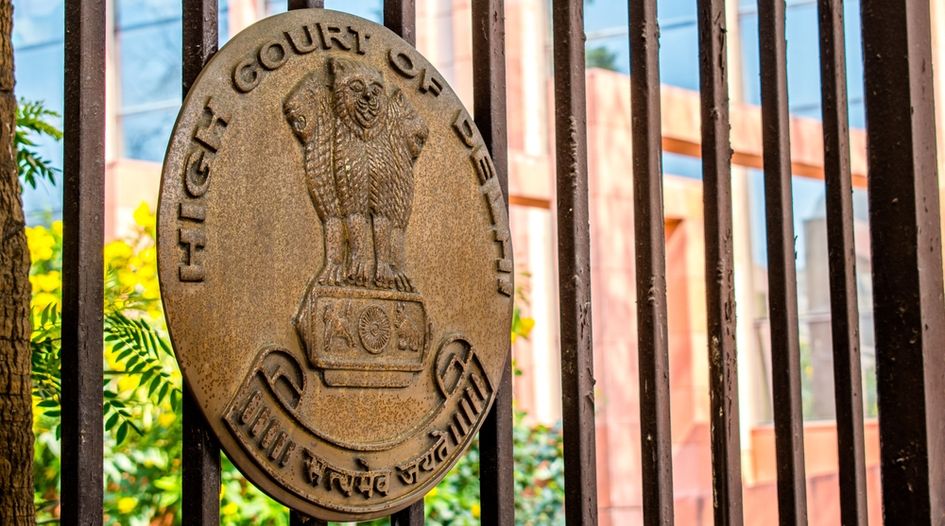Delhi High Court addresses implications of legislation governing trade name changes following a finding of infringement

The Delhi High Court has injuncted use of the mark ZANOFI, which was deceptively similar to the plaintiffs’ prior registered trademark SANOFI (Sanofi & Anr v Zanofi Pharmaceutical Pvt Ltd, CS/Comm 881/2023, 19 December 2023). The court clarified that in cases of trademark infringement, Section 12(3) of the Companies Act 2013 – which mandates use of a company’s former name alongside its new name for a period of two years – cannot come to the aid of infringers.
Case background
Sanofi is one of the largest pharmaceutical groups in the world and has been using the trademark SANOFI since 1973. Products bearing this mark entered the market in the 1980s and registrations were obtained in India in 1984 (423613 and 423612). Sanofi approached the Delhi High Court to restrain pharmaceutical company Zanofi’s use of the corporate name and trademark ZANOFI with respect to identical services: pharmaceuticals.
The defendant contested the suit on the grounds that the marks SANOFI and ZANOFI were distinct. However, the court disagreed and held that the marks were phonetically identical. Given that the rival parties operate in the same industry, the defendant was restrained from using ZANOFI both as a trademark and trade name. The court also directed the defendant to apply for a change of company name within one week and asked the Registrar of Companies to process its application within a period of six weeks.
Zanofi applied for a new company name – Naltisam Pharmaceutical – and a certificate was issued by the registrar. However, the problem arose when a note was appended with the certificate, requiring the defendant to display its former name along with its new name for a period of two years as per Section 12(3) of the Companies Act. The defendant moved for an application seeking clarification from the court.
Interpreting the relevant legislation
The question was whether a court is bound by the mandatory provisions of the Companies Act in a trademark infringement suit. According to Section 12(3), if a company has changed its name in the two years prior, it must paint, affix or print its former name along with its new one.
To interpret the above provision, the court referred to Section 16, which provides for rectification of a company name upon the central government’s direction or application by the registered proprietor of a trademark if it is similar to any existing registered mark.
To decode and apply the legislation, the court envisaged the following situations:
- a voluntary change of name under Section 12;
- the central government directs a change in name on account of resemblance with an existing registered company name under Section 16(1);
- the central government is approached for a change-of-name request by the registered proprietor of a trademark under Section 16(2); and
- a company name is changed upon the direction from a court in an infringement suit.
The court noted that in the second and third situations, Section 16 does not impose an obligation equivalent to the one in Section 12(3), which mandates that a company changing its name must use its old name alongside its new one. According to the court, the legislature’s intention was to restrict the latter requirement only to cases where a company changes its name voluntarily under Section 12.
In this case, the court ordered a change of name after an injunction application, in light of infringement of a registered trademark. Consequently, if the defendant was asked to use the old infringing name alongside its new name, the whole purpose of the infringement proceedings and the injunction order would be futile.
Thus, the defendant was permanently restrained from using the mark ZANOFI and further directed to display only its new name with respect to all its goods, services, packaging or promotional materials.
Key takeaways
This ruling is significant because the court recognised the plaintiff’s long-standing rights to the mark SANOFI and did not hesitate to injunct an established business from using the near-identical trade name ZANOFI.
For the first time, the court has clarified the interplay between the Trade Marks Act 1999 and Companies Act to prevent infringers from taking undue advantage of Section 12(3) of the latter legislation.
WTR recommends
Brand protection at the Singapore border: insights and strategies from the front line
Managing Infringement Threats Across the Supply Chain
The right tactics for the right case: how to tailor your litigation strategy to different jurisdictions
This is an Insight article, written by a selected partner as part of WTR's co-published content. Read more on Insight
Copyright © Law Business ResearchCompany Number: 03281866 VAT: GB 160 7529 10